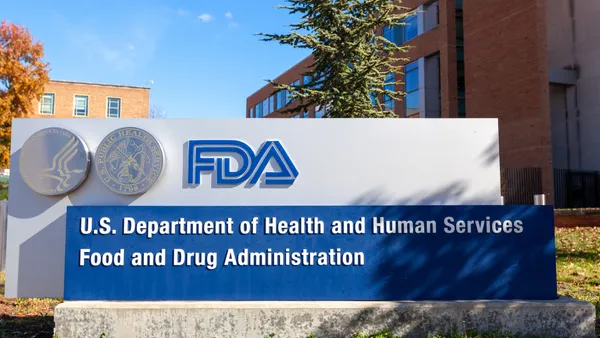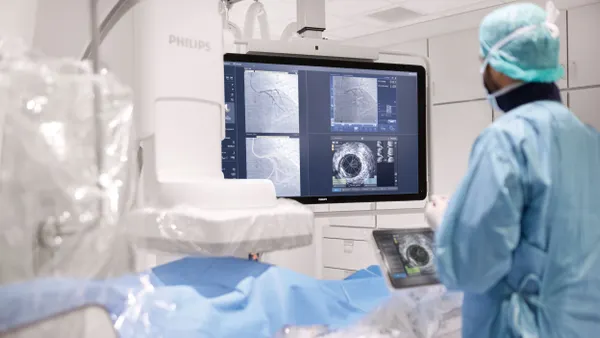Dive Brief:
- The U.S. will impose a 10% tariff on the remaining $300 billion worth of imports from China, known as list four, beginning Sept. 1, President Donald Trump tweeted Thursday afternoon. Trump also alluded to the possibility the 10% duty rate could increase or decrease, depending on the outcome of negotiations. "It can be lifted up to well beyond 25%," he said. "But we’re not looking to do that necessarily."
- Trump told reporters outside the White House Thursday negotiators from the U.S. and China would meet again in early September. He said the reason for the Sept. 1 tariff implementation date was not to allow negotiation time, but rather because "it takes a long time for the ships to come over."
- Medical device lobby AdvaMed told MedTech Dive in an email it's watching the tariff's implications closely. The U.S. supplies more than 30% of China's medical device and diagnostic imports and AdvaMed fears the trade war could adversely affect that relationship if it continues.
Dive Insight:
Starting at the beginning of next month, every good coming into the U.S. from China, except those with exemptions, will have an import tax, ranging from 10% to 25%.
But it's unknown right now exactly which products are on the list because a proclamation has not yet been issued with the list of products, AdvaMed's Ralph Ives, executive vice president, global strategy and analysis, told MedTech Dive.
Ives said AdvaMed "strongly opposes tariffs by both sides on medical technology products" and "is engaged with USTR regarding the U.S.-China trade talks."
“To date, our industry has had additional tariffs imposed on about $860 million of medical technology imports from China into the U.S. at a rate of 25 percent, and on almost $5 billion of U.S. medtech exports to China at a rate of up to 25 percent," Ives said. And, approximately $100 million of medtech component parts from China are subject to 25 percent import tariffs on top of that, he said.
AdvaMed has heavily lobbied for exemptions for its products from the tariffs but it hasn't been completely successful, as many items it sought exemptions for, such as pacemakers, so far appear to remain on the 25% tariff list.
The tranche four tariffs on $300 billion worth of goods have been in limbo for several months, first as a repeated threat from Trump, via speeches and twitter.
The threat came closer to reality in May when the U.S. Trade Representative released a 136-page list of products to face tariffs up to 25% and held a comment period plus seven days of public hearings on the matter. In late June, Trump said he wouldn't impose the list four tariffs "for the time being."
Executives on earnings calls have warned about the effects of tranche four tariffs on their businesses, noting the potential for eroding margins and higher costs being passed on to consumers.
Macy's called this round "the big one." The National Retail Federation said tariffs at 25% would be "too large" for retailers to absorb, though it did not specify at the time how 10% tariffs would affect retailers.
The series of tweets came after U.S. representatives returned from trade talks with Chinese officials. Trump described the talks as "constructive," but said China had agreed to buy agricultural products from the U.S. "in large quantities, but did not do so." Hua Chunying, spokesperson for the Chinese foreign ministry, said China is prepared to retaliate with "necessary countermeasures," according to multiple news reports.













